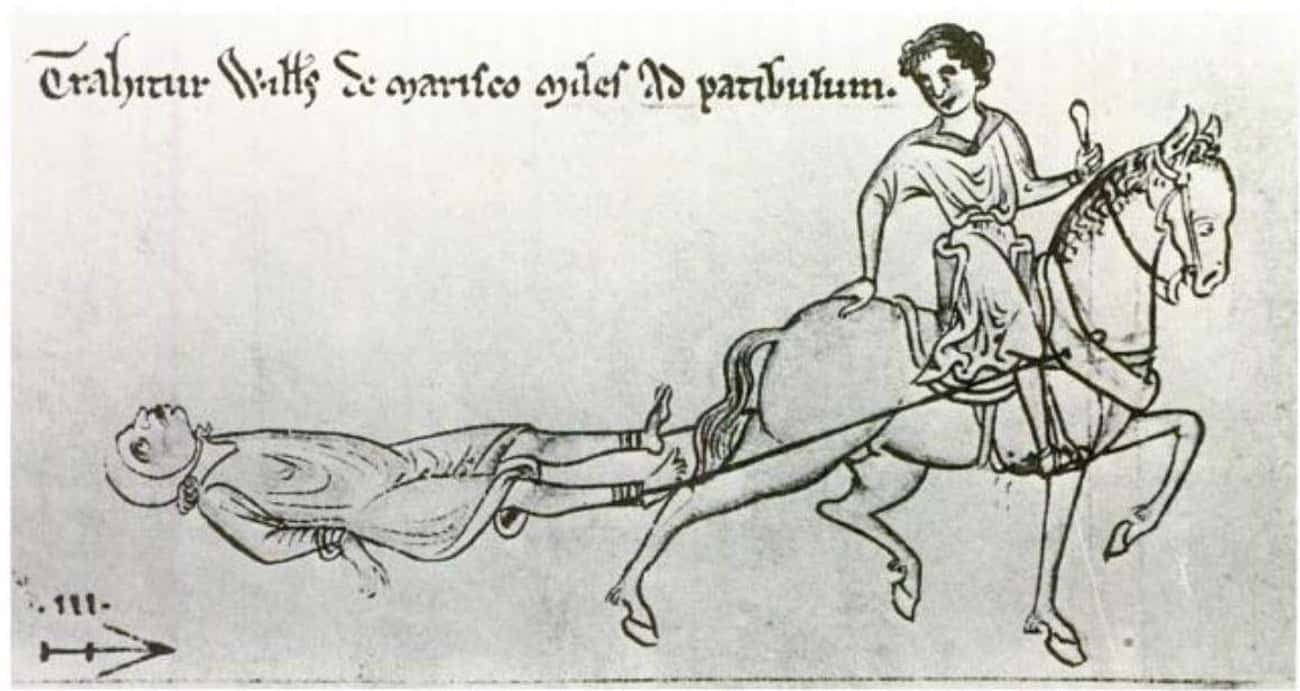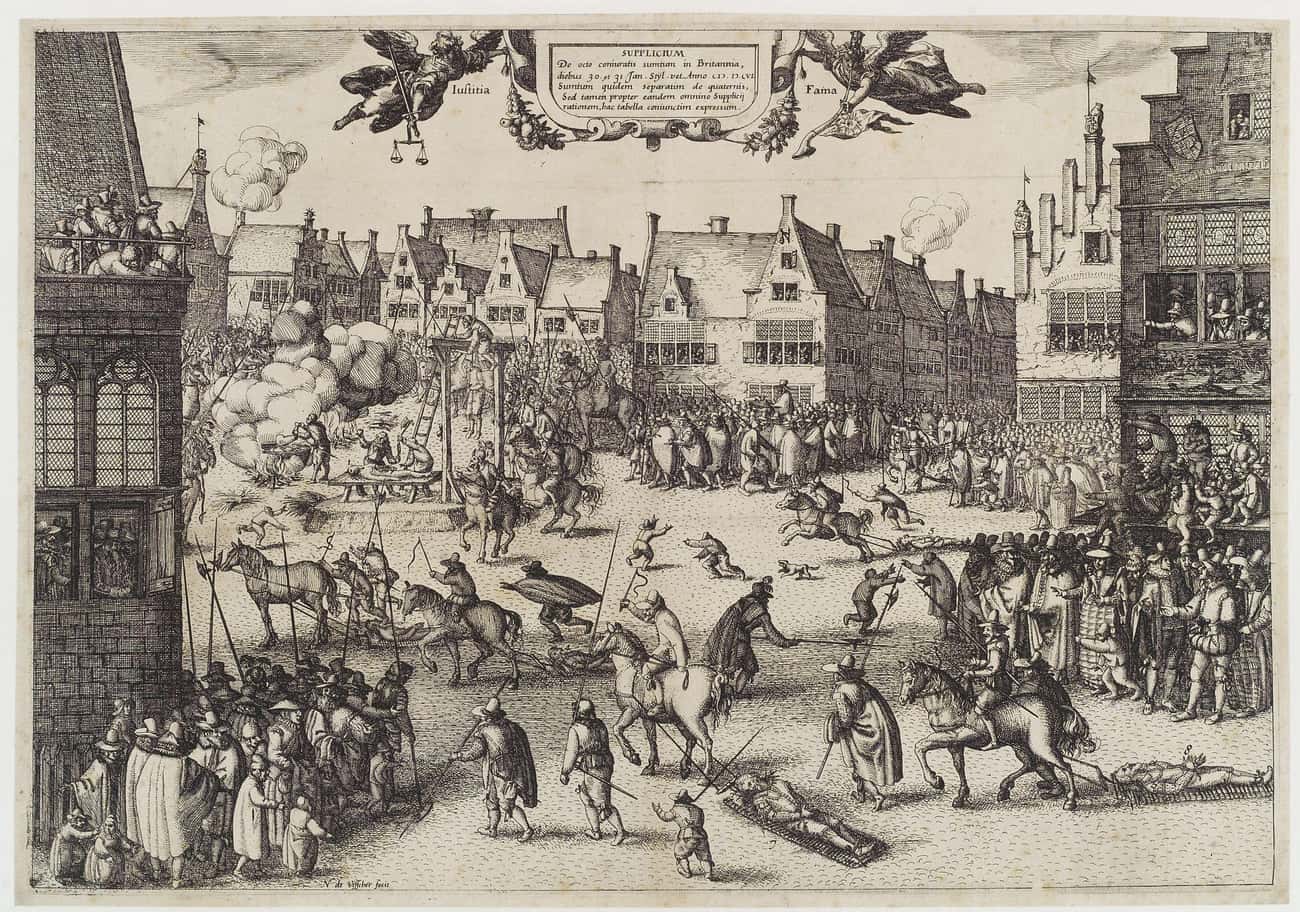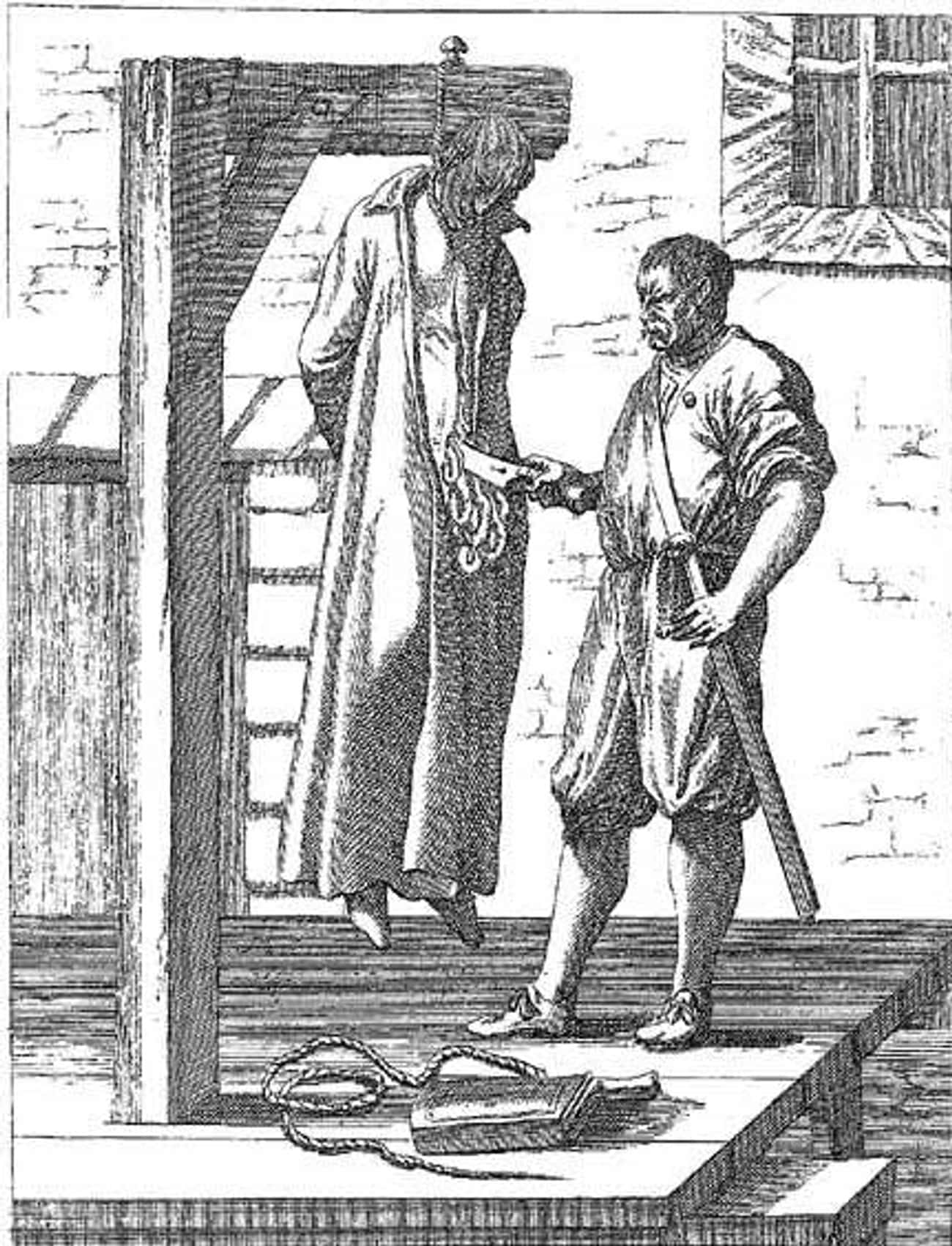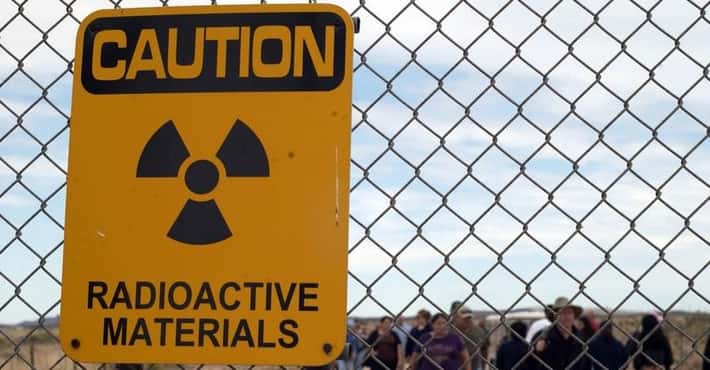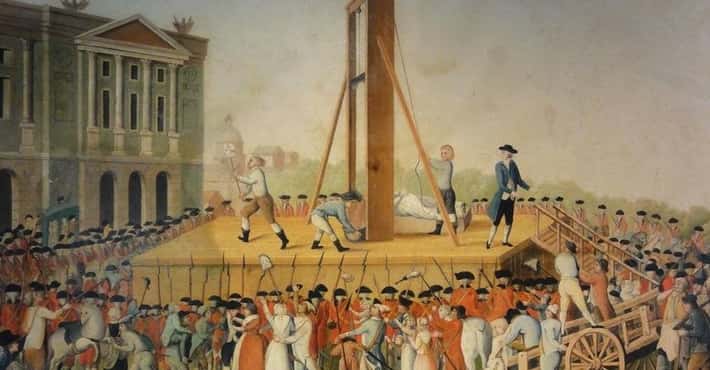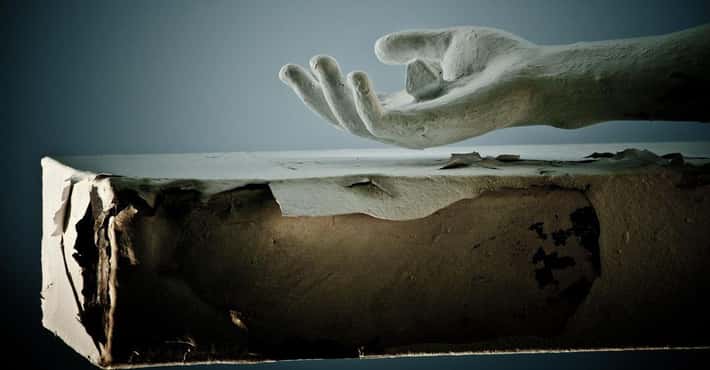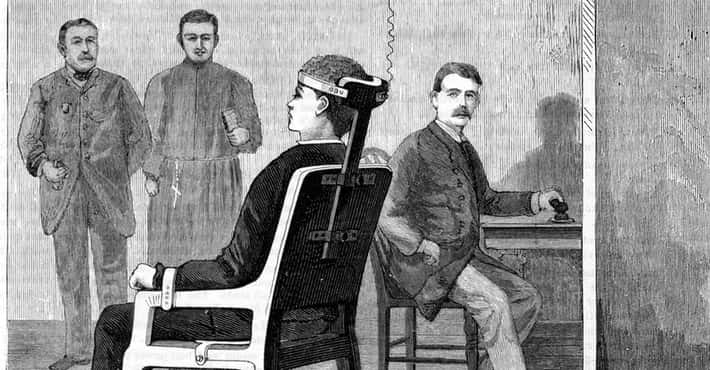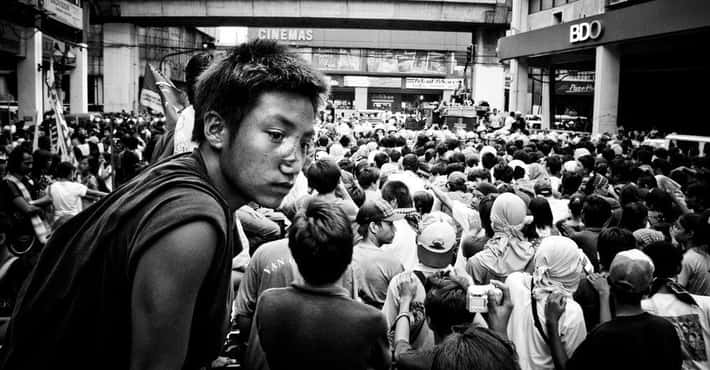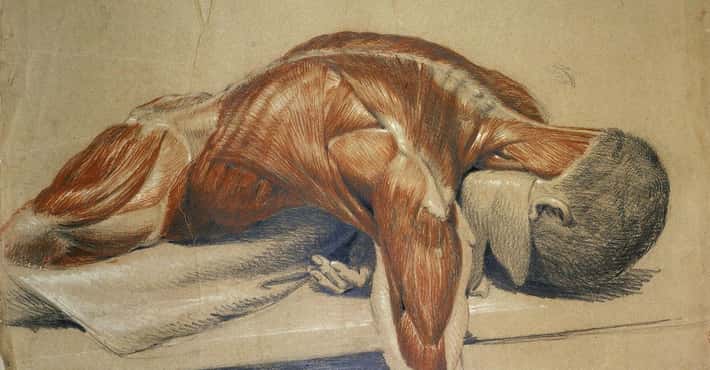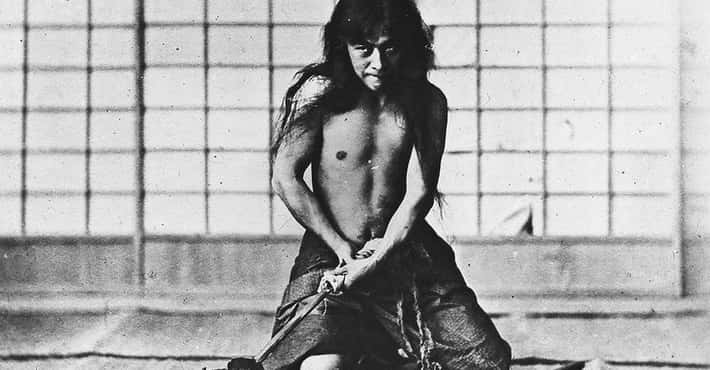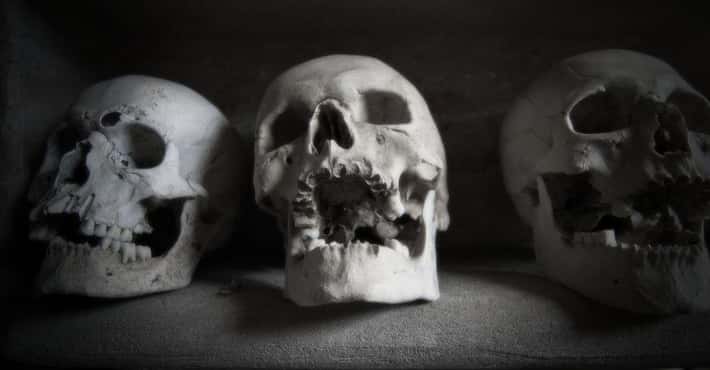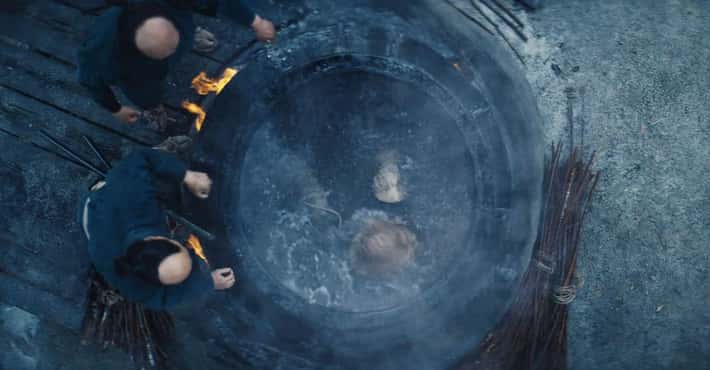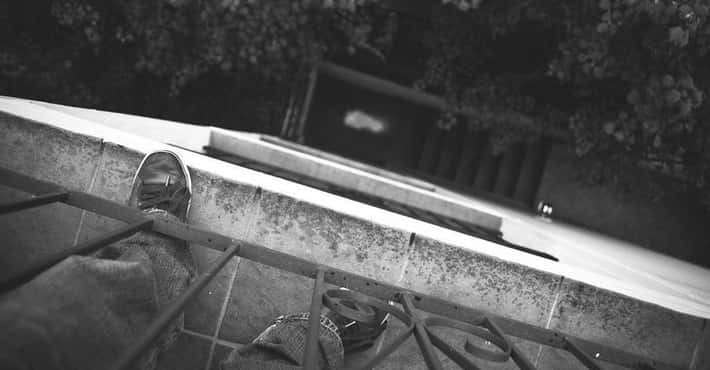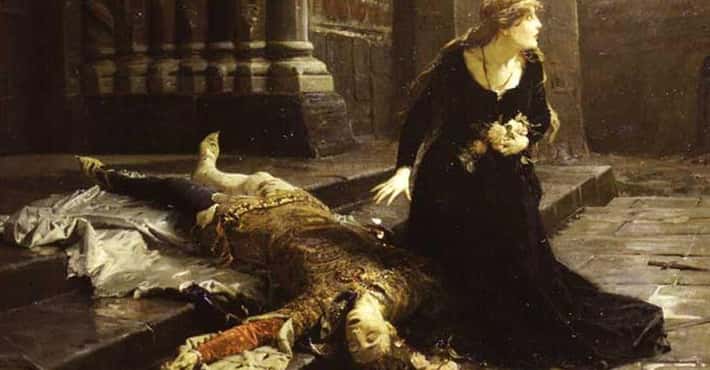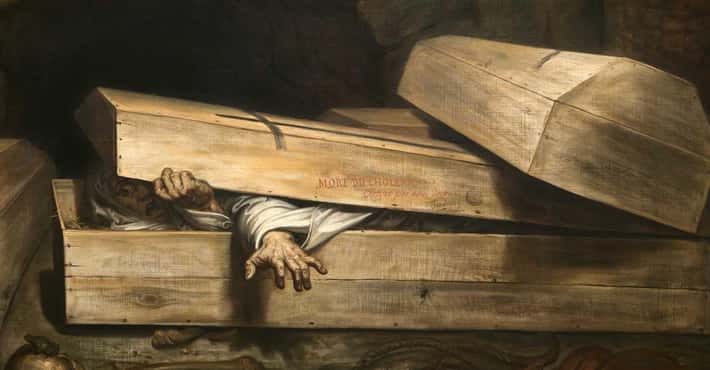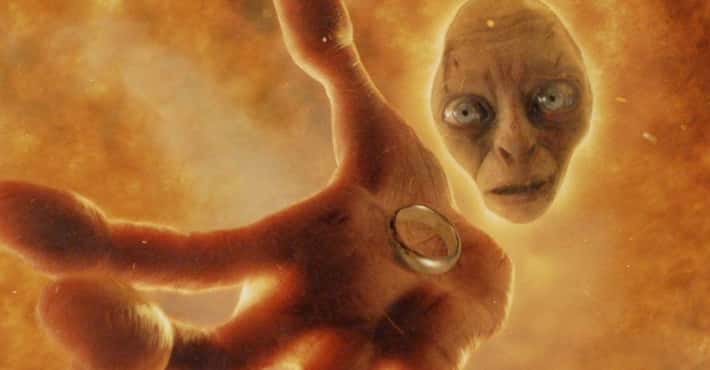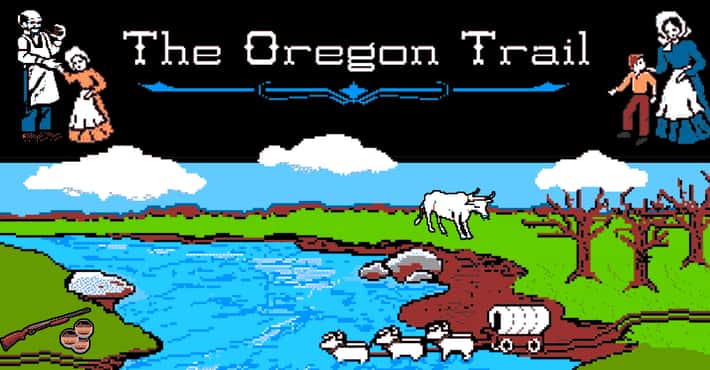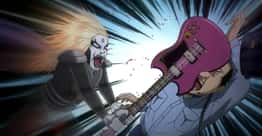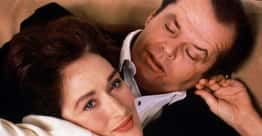What It's Like To Be Drawn And Quartered
Drawing and quartering began in 14th-century England as the official punishment for treason. As treason was seen as the greatest threat to rulers, the penalty was excessively and intentionally brutal in order to instill compliance in onlookers. In fact, the public spectacle of the process - and the public display of the body parts afterward - was the primary reason for this horrific practice.
While the words “drawn” and “quartered” seem simple enough, a lot more went into this severe punishment than these two words even begin to reveal on their own. Being drawn and quartered included many more horrible things, from burning and hanging to castration and dismemberment. Read on for a glimpse into exactly what being drawn and quartered does to your body.
Traitors Were Tied To A Horse And Dragged To The Site
Photo: Matthew Paris / Wikimedia Commons / Public DomainThose convicted of treason were first dragged to the event site attached to the back of a horse. Sometimes it was as simple as tying their hands and ankles with ropes. While the latter seems somewhat more compassionate, the real purpose was to keep the captives alive so they could properly endure their punishment.
By this point, fear would flood the individual's body with adrenaline, causing their heart rate and blood pressure to rapidly increase.
Unruly Crowds Harmed The Traitor Before The Event Even Began
Photo: Claes (Nicolaes) Jansz Visscher / Wikimedia Commons / Public DomainTraitors would often be subjected to boisterous crowds upon arriving at the site. These people came specifically to watch the barbaric display of retribution. However, just watching the process wasn't enough: Crowds would usually be waiting for their own opportunity to get their hands on the traitor.
These vicious preliminary attacks could easily result in blunt force trauma, causing everything from abrasions and lacerations to hemorrhaging and ruptured organs.
Traitors Were Hanged Before They Were Drawn And Quartered
Photo: Public Domain / Wikimedia Commons / Public DomainThe phrase “drawn and quartered” was usually short for “hanged, drawn, and quartered.” The process would begin with a hanging. Traitors were hanged until they had almost perished, and the short drop method was often employed to ensure that they didn't perish.
And it was always men - female traitors were burned at the stake instead.
The Traitor Would Have His Limbs Cut Off Or Burned
Photo: Wikimedia Commons / Public DomainMore often than not, the traitor would experience extra punishment outside of the outlined program. This involved everything from disembowelment to beheading to the burning of entrails.
If the traitor’s body was not already in shock from asphyxiation, it would definitely be in shock by now. These types of injuries would cause immense pain, as burns can affect nerves, blood vessels, muscles, and bones. The burned portions of the flesh would experience instant cell death, an immense loss of fluids, and edema, or extreme swelling.
Traitors Were Also Castrated In Order To Emasculate Them
Photo: Wikimedia Commons / Public DomainWhat could be worse than disembowelment? How about being disemboweled AND castrated? In addition to watching their entrails being pulled out, traitors also had to witness their genitals being sliced off. This act symbolically took away the traitor's masculinity, permanently ending the traitor’s bloodline and name.
If the traitor had not yet bled out, then this horrific mutilation usually resulted in his passing.
The Traitor's Genitals Would Be Burned In Front Of His Eyes
Photo: Jan Luyken / Wikimedia Commons / Public DomainOnce the traitor’s abdominal cavity was emptied and his manhood detached, his genitals and entrails were burned right in front of him. Sometimes, if the charges were particularly heinous, the executioner would go the extra mile to dig out the contents of the traitor’s chest cavity and burn them, as well.
By this point in the harrowing process, the traitor would have most likely already perished from shock, as there would be no substantial blood pressure and no vital organs to sustain the remnants of the body. If they happened to be unlucky enough to survive to this point, they would barely be hanging on to any essence of life.
The Traitor's Corpse Would Be Tied To Four Running Horses And Torn To Pieces
Following all of the agony, the traitor’s corpse would be quartered. In this act, the body was divided into four parts, or quarters. Sometimes this was entirely done by hand, but it has been more notably achieved by scoring the body before tying the limbs (or remaining limbs) to four horses.
The horses would then be booted to trot away in four different directions, tearing the body apart.
The Traitor's Body Parts Would Be Inscribed With Warnings And Posted In Public Places
The preserved quarters were sometimes hung on a gibbet, but typically, treason required that the parts be put on display in various public places.
Each limb would often receive an inscription stating the reason(s) for its exposure before being placed atop town gates.
King Edward I Invented This Method And Used It On His Childhood Friend
Photo: John Foxe / Wikimedia Commons / Public DomainOne of the first people to experience this threefold method was David, Prince of Wales. The inception of this punishment has been attributed to Edward I of England. Edward, a childhood friend of David, was the ruler of England for 35 years, from 1272 to 1307.
David betrayed Edward when he sided with his brother Llywelyn to fight for Welsh independence. David was hanged, drawn, and quartered in 1283. His head and his brother's were placed together on top of stakes at the Tower of London.
A Traitor Was Drawn And Quartered On US Soil In 1676
Photo: Wikimedia Commons / Public DomainThe savagely cruel drawing and quartering method was in no way restricted to English soil. This punishment was actually adopted for a short time by colonists in the United States. Joshua Tefft, an English colonist, was drawn and quartered in 1676.
Tefft met his end because he fought against colonial leaders alongside the Native American Narragansett tribe. This depraved act of punishment took place in Rhode Island and is believed to be the only incident of its kind in the United States.


